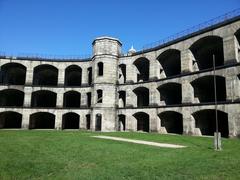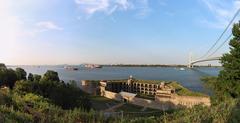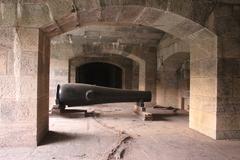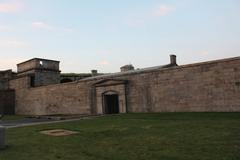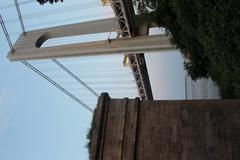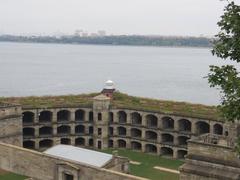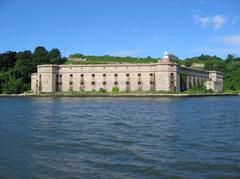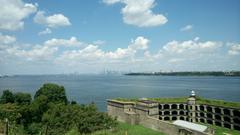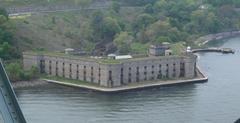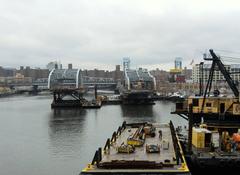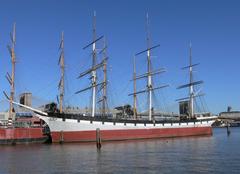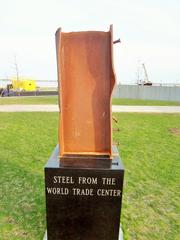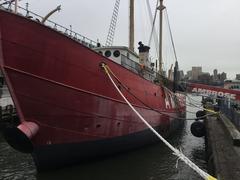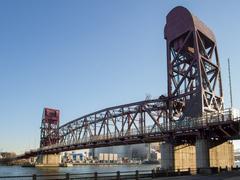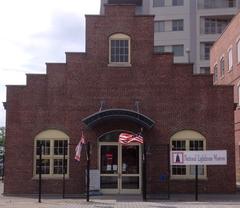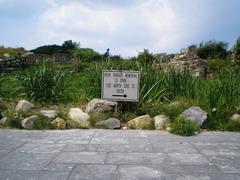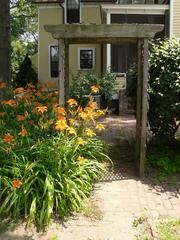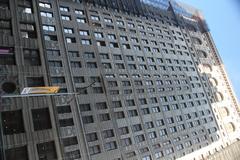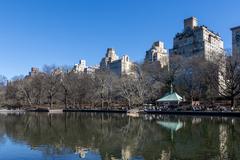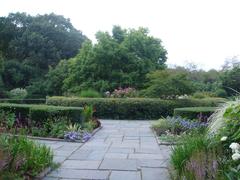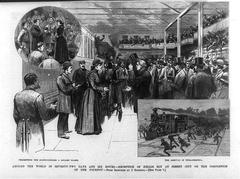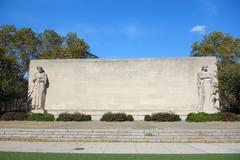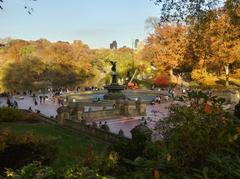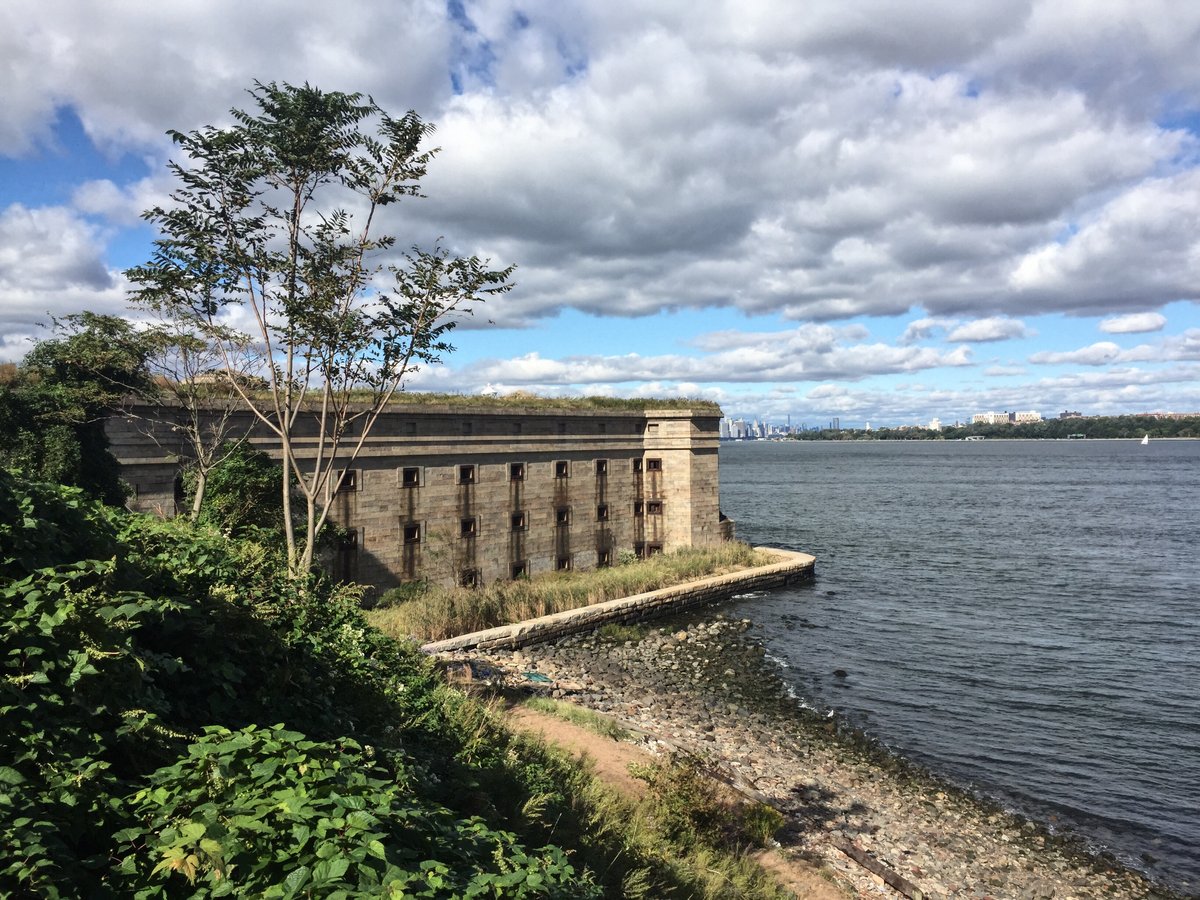
Visiting Battery Weed: History, Tickets, and Tips
Date: 17/08/2024
Introduction
Battery Weed, nestled on Staten Island within New York City, is a historic fortification that offers visitors a compelling glimpse into America’s coastal defense history. Constructed between 1847 and 1861, Battery Weed was originally called Fort Richmond and was built to guard the Narrows, the primary maritime gateway from the Atlantic Ocean to New York Harbor (Wikipedia). The fort was later renamed in honor of Stephen Weed, a New York native who perished at the Battle of Gettysburg in 1863 (NPS). As part of the larger Fort Wadsworth complex, Battery Weed holds significant historical and architectural value, showcasing mid-19th century military engineering advancements (Forgotten NY). Today, it stands as a testament to the evolving nature of military technology and coastal defense strategies in the United States, serving both as an educational resource and a fascinating destination for history enthusiasts and tourists alike (Travalour).
Table of Contents
- [Exploring Battery Weed: History, Visiting Hours, and Tickets](#exploring-battery-weed-history-visiting-hours-and-ticketsexploring-battery-weed-history-visiting-hours-and-tickets)
- [Early Conception and Construction](#early-conception-and-constructionearly-conception-and-construction)
- [Naming and Dedication](#naming-and-dedicationnaming-and-dedication)
- [Architectural and Military Features](#architectural-and-military-featuresarchitectural-and-military-features)
- [Role During the Civil War](#role-during-the-civil-warrole-during-the-civil-war)
- [Post-Civil War Developments](#post-civil-war-developmentspost-civil-war-developments)
- [Integration into Fort Wadsworth](#integration-into-fort-wadsworthintegration-into-fort-wadsworth)
- [Transition to National Park Service](#transition-to-national-park-servicetransition-to-national-park-service)
- [Visiting Hours and Tickets](#visiting-hours-and-ticketsvisiting-hours-and-tickets)
- [Guided Tours and Travel Tips](#guided-tours-and-travel-tipsguided-tours-and-travel-tips)
- [Nearby Attractions](#nearby-attractionsnearby-attractions)
- [Accessibility](#accessibilityaccessibility)
- [Preservation and Public Access](#preservation-and-public-accesspreservation-and-public-access)
- [Historical Significance](#historical-significancehistorical-significance)
- [FAQ](#faqfaq)
- [Visitor Experience](#visitor-experiencevisitor-experience)
- [Stay Up to Date](#stay-up-to-datestay-up-to-date)
Exploring Battery Weed: History, Visiting Hours, and Tickets
Early Conception and Construction
Battery Weed, originally named Fort Richmond, is a historic fortification located on Staten Island, New York City. The construction of Battery Weed began in 1847 and was completed in 1861. This four-tiered fortification was strategically positioned on the Staten Island waterfront on the west shore of the Narrows, directly across from Fort Hamilton and the now-destroyed Fort Lafayette in Brooklyn. The primary purpose of Battery Weed was to guard the Narrows, the main approach from the Atlantic Ocean to New York City, and to protect New York Harbor from potential threats during the Civil War (Wikipedia).
Naming and Dedication
The fort was initially named Fort Richmond, a name it shared with a previous fort on the same site. However, it was later renamed Battery Weed in honor of Stephen Weed, a native New Yorker who was killed in action at the Battle of Gettysburg in 1863 (NPS). This renaming was part of a broader tradition of commemorating fallen soldiers by naming military installations after them.
Architectural and Military Features
Battery Weed was designed as a coastal defense structure, featuring 116 10-inch Rodman guns mounted on the fort. These formidable artillery pieces were intended to deter and defend against enemy ships attempting to enter New York Harbor. Despite its impressive arsenal, Battery Weed became almost immediately obsolete due to rapid advances in military technology during the mid-19th century (NPS).
Role During the Civil War
During the Civil War, Battery Weed played a crucial role in the defense strategy for New York Harbor. The fort’s strategic location and heavy armament made it a key component of the harbor’s coastal defenses. However, the fort never saw combat, as its mere presence and the threat of its firepower were sufficient to deter potential naval attacks (Travalour).
Post-Civil War Developments
After the Civil War, Battery Weed continued to serve as a military installation, although its role and significance diminished over time. The rapid advancements in military technology, particularly in naval warfare and artillery, rendered many of the fort’s original defenses obsolete. Despite this, Battery Weed remained an active military post well into the 20th century (Forgotten NY).
Integration into Fort Wadsworth
Battery Weed is part of the larger Fort Wadsworth complex, which has a long history of military use dating back to the 17th century. Fort Wadsworth, located on the northeastern shore of Staten Island, was one of the longest continually operating military forts in the United States. The area was known as Signal Hill during the colonial period and the Revolutionary War, serving as a crucial site for monitoring and signaling the approach of British vessels (Forgotten NY).
Transition to National Park Service
In September 1995, Fort Wadsworth, including Battery Weed, was transferred to the care of the National Park Service as part of the Gateway National Recreation Area. This transition marked the end of Battery Weed’s active military use and its transformation into a historical site open to the public. Today, visitors can explore the exterior of Battery Weed at all times, while the interior is accessible only through park ranger escorted tours (Wikipedia).
Visiting Hours and Tickets
Battery Weed is open to visitors year-round. The exterior of the fort can be explored at all times, while guided tours of the interior are available through park ranger escorts. These tours provide a deeper understanding of the fort’s history and significance. There is no entrance fee for Battery Weed, but donations are welcome to support preservation efforts. For the most current visiting hours and tour schedules, it is recommended to check the National Park Service website.
Guided Tours and Travel Tips
Guided tours of Battery Weed offer an in-depth look at the fort’s construction, use, and historical significance. Tours are led by knowledgeable park rangers and typically last about an hour. Comfortable walking shoes are recommended, as the tour includes exploring various levels of the fort. Visitors should also bring water and sun protection, especially during the warmer months.
Nearby Attractions
In addition to Battery Weed, visitors can explore other historical sites within the Fort Wadsworth complex, including Fort Tompkins. The nearby Verrazzano-Narrows Bridge offers stunning views and photo opportunities. Staten Island also boasts other attractions such as the Staten Island Ferry, Staten Island Zoo, and Snug Harbor Cultural Center.
Accessibility
Battery Weed has made efforts to accommodate visitors with disabilities. While some areas of the fort may be challenging to access due to its historic structure, park rangers are available to assist and provide information. Accessible parking is available at Fort Wadsworth, and there are paved paths leading to Battery Weed.
Preservation and Public Access
Battery Weed’s preservation as a historical site allows visitors to appreciate its architectural and historical significance. A 10-inch smoothbore Rodman gun, one of the original artillery pieces, is preserved within the fort. The fort’s grounds and military museum are open to the public, although parts of the grounds are still used by the Coast Guard and are closed to public access. A designated 1.5-mile trail winds past both Battery Weed and Fort Tompkins, offering visitors a scenic and educational experience (Forgotten NY).
Historical Significance
Battery Weed stands as a testament to the evolving nature of military technology and coastal defense strategies in the United States. Its construction and subsequent obsolescence highlight the rapid pace of technological advancements during the 19th century. Additionally, Battery Weed’s integration into Fort Wadsworth and its eventual transition to the National Park Service underscore the importance of preserving historical sites for public education and appreciation (NPS).
FAQ
What are the visiting hours for Battery Weed? Battery Weed is open year-round for exterior exploration. Guided tours of the interior are available through park rangers. Check the National Park Service website for the most current visiting hours.
How can I buy tickets for Battery Weed? There is no entrance fee for Battery Weed, but guided tours are available through park ranger escorts. Donations are welcome to support preservation efforts.
Are there any nearby attractions to Battery Weed? Yes, visitors can explore other historical sites within the Fort Wadsworth complex, the Verrazzano-Narrows Bridge, the Staten Island Ferry, the Staten Island Zoo, and the Snug Harbor Cultural Center.
Is Battery Weed accessible for visitors with disabilities? While some areas may be challenging to access due to the historic nature of the fort, park rangers are available to assist. Accessible parking is available at Fort Wadsworth.
Visitor Experience
Today, Battery Weed is a popular destination for history enthusiasts and tourists visiting Staten Island. The fort’s imposing structure and scenic location offer a unique glimpse into the past. Visitors can explore the fort’s exterior, learn about its history through informational plaques, and enjoy guided tours that provide in-depth insights into its construction, use, and significance. The surrounding area, including Fort Wadsworth and nearby attractions like the Verrazzano-Narrows Bridge, further enhances the visitor experience (Travalour).
Stay Up to Date
For the latest updates, visitors are encouraged to check the National Park Service website and follow on social media. Download the Audiala mobile app for more information and updates on Battery Weed and other historical sites.
Conclusion
Battery Weed remains a significant historical site that underscores the United States’ efforts in coastal defense and the rapid advancements in military technology during the 19th century. Its strategic location and robust construction made it a key component in the defense of New York Harbor, even though it never saw combat. The fort’s integration into Fort Wadsworth and its eventual transition to the National Park Service have ensured its preservation for future generations to explore and appreciate (NPS). Visitors today can gain valuable insights into the fort’s history, architectural features, and its role during pivotal moments like the Civil War through guided tours and informational plaques (Travalour). The surrounding Fort Wadsworth complex and nearby attractions, such as the Verrazzano-Narrows Bridge and the Staten Island Ferry, further enhance the visitor experience, making Battery Weed a must-visit destination for those interested in American history and coastal defenses (Bowery Boys History). With continued efforts in preservation and education, Battery Weed will remain a valuable cultural and historical asset, offering educational opportunities and enriching experiences for all who visit.
References
- Wikipedia. (n.d.). Battery Weed. Retrieved from Wikipedia
- National Park Service. (n.d.). Battery Weed. Retrieved from NPS
- Forgotten NY. (2024, February). Battery Weed, Fort Wadsworth. Retrieved from Forgotten NY
- Travalour. (n.d.). Battery Weed. Retrieved from Travalour
- National Park Service. (n.d.). Fort Wadsworth. Retrieved from NPS
- Bowery Boys History. (2011, August). Fort Wadsworth and Ghosts of the Civil War. Retrieved from Bowery Boys History

